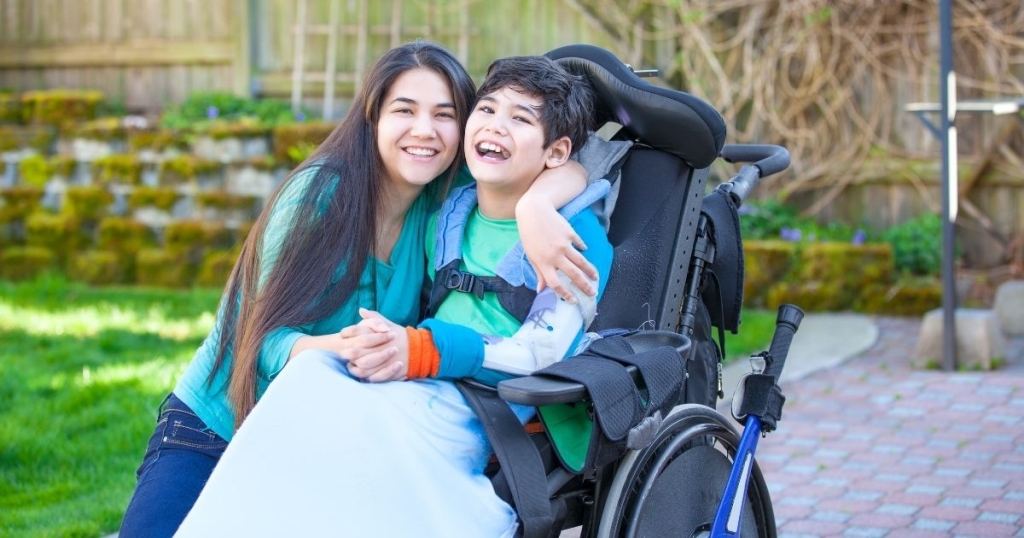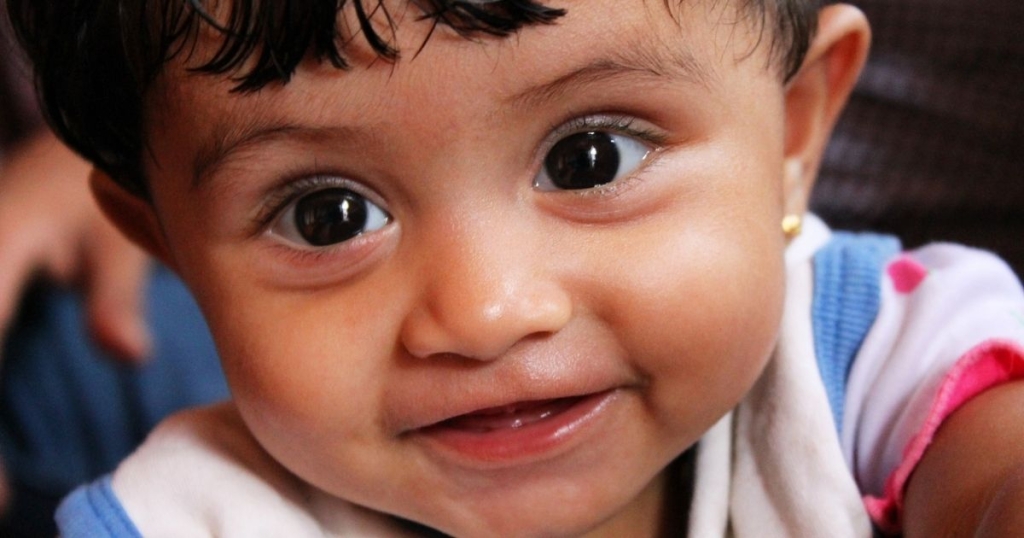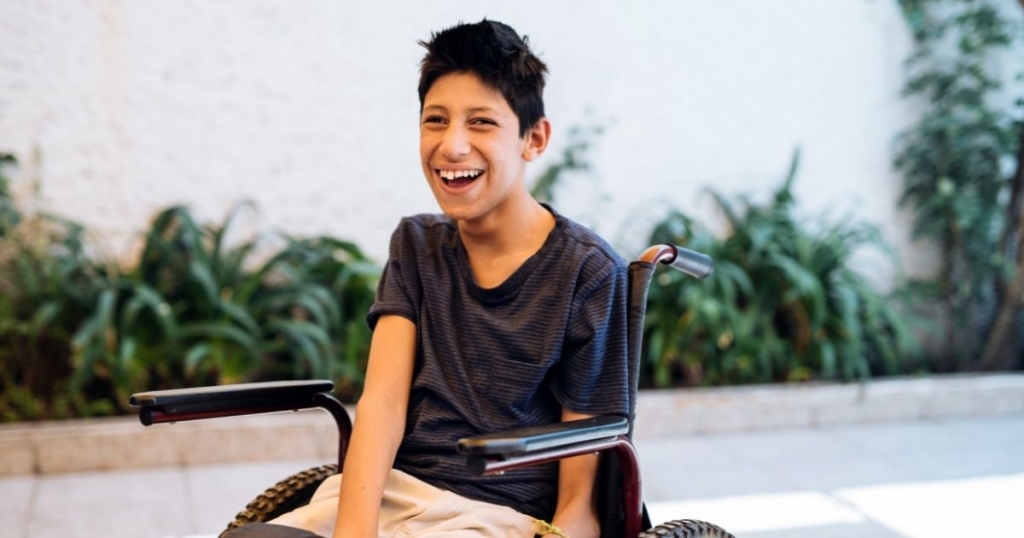

Author: Geetanjali Rathore, MD, University of Nebraska Medical Center, Children’s Hospital and Medical Center, Omaha, NE
Reviewed: November 2021
SUMMARY
Duchenne muscular dystrophy (DMD) is a genetic disease that causes muscles to become weaker and damaged over time. It is the most common muscular dystrophy affecting children. About 20,000 babies worldwide are born with DMD every year. It mostly affects males. Females can be affected, but this is rare. Females are typically just carriers.
JUMP TO
Disorder Overview
DESCRIPTION
Duchenne muscular dystrophy causes weakness of the muscles due to a genetic mutation. Most children with DMD will lose ability to walk without assistance. They will need wheelchairs by their early teen years. Over time, the heart and the muscles that help with breathing become weaker. This can lead to heart or respiratory failure. At this stage, DMD becomes life threatening.
Until the 1980’s, children with DMD did not survive long beyond their teen years. With recent advances, however, life expectancy is increasing. Many young adults with DMD live well into their 30s. New gene therapies and better heart and respiratory care have made this possible.


Becker Muscular Dystrophy (BMD)
BMD is similar to DMD. BMD can cause:
- Weakness of the leg and arm muscles
- Trouble breathing
- Heart problems
However, BMD symptoms are usually less severe. Its symptoms are only slowly progressive. Children with BMD tend to survive through late adulthood.
SIGNS AND SYMPTOMS
The symptoms of DMD can range from mild to severe.

Early Symptoms of Duchenne Muscular Dystrophy
Muscle weakness is usually the first symptom of DMD. The large muscles in the legs are usually affected first. Arms and smaller muscles are affected after that. Initial symptoms may include:
- A hard time running
- A hard time climbing stairs
- Abnormal waddling gait
- Enlargement of the calves
Ongoing Symptoms of Duchenne Muscular Dystrophy
Typical symptoms after onset include:
- Delayed motor development. A child may take longer to sit, stand, or walk.
- Abnormality in walking. A child may use toe walking or a waddling gait.
- Muscle weakness. Muscle weakness is progressive (it gets worse over time).
- Large calf muscles.
- Difficulty moving. For instance, it may be hard to get up off the floor or to use stairs.
- Heart problems. Over time, the heart will grow larger and not functions as well as it should.
- Breathing problems. Over time, the muscle that help with breathing become weaker. This can also cause sleep apnea.
- Learning disabilities and attention problems. Issues with cognitive functioning affect about 1 in 3 children.


CAUSES
DMD occurs as a result of a mutation in the DMD gene. The DMD gene helps produce something called dystrophin protein. Dystrophin protein is needed for the normal functioning and survival of muscle cells.
Without dystrophin protein, children can experience:
- Muscle damage
- Muscle inflammation
- Progressive weakness
The DMD gene is on the X-chromosome. This means DMD is inherited in an X-linked pattern.
Boys and DMD
Girls and DMD
Girls have two X-chromosomes, one from each parent. If girls have one abnormal DMD gene copy, they usually do not have symptoms. This is because the dystrophin protein can still be made by the other, functional copy. Females with one abnormal copy of the gene are called carriers. In rare cases, carriers may experience mild signs or symptoms.
Mothers who are carriers have a 25% chance of having a son with the condition, a 25% chance of having a daughter who is a carrier, and a 50% chance of having a son or daughter without an abnormal gene copy. Fathers with DMD cannot pass the disorder on to his sons. However, all of his daughters will be carriers.
In rare cases, a boy can be diagnosed with DMD without any family history of this condition. This happens when a new mutation occurs in the DMD gene during the development of the embryo or fetus.


DIAGNOSIS AND LABORATORY INVESTIGATIONS
Steps to Making a DMD Diagnosis
- A doctor will look at a child’s health history and family history. The doctor will look for signs of progressive muscle weakness.
- During a physical exam, this doctor will look for certain symptoms. This classic pattern in boys can be highly suggestive of a DMD diagnosis:
- Weakness in the large muscles of the legs
- Large calf muscles
- When suspicious of DMD, the doctor will then recommend:
- Blood testing for muscle enzymes
- Genetic testing
- Muscle biopsy (less common)
Blood Testing for Muscle Enzymes
Genetic Testing
To confirm the diagnosis of DMD, a genetic blood test can look at a child’s DNA. This test looks for a mutation/abnormality in the DMD gene.
New therapies can target specific mutations in the DMD gene. However, there are more than 18,000 different kinds of abnormalities that can cause this disorder. Genetic testing can help identify a child’s specific gene abnormality. It is becoming increasingly important to know your child’s mutation so your doctor can plan the best path forward for your child.
Muscle Biopsy
Sometimes, a muscle biopsy is used to help with diagnosis, in addition to genetic testing. In a muscle biopsy, a small piece of muscle is surgically removed for the doctors look at under the microscope. They look for evidence of muscle disease. The biopsy can also be used to measure any dystrophin in the child’s muscle. The quantity of dystrophin in the muscle can help predict how severe the disorder will be.
Here is how doctors use dystrophin levels to understand the severity of the disease:
- Duchenne muscular dystrophy. Levels at less than 5% of the normal quantity. This is the most severe.
- “Intermediate” muscular dystrophy. Levels at 5% to 20% of the normal quantity. This is moderately severe.
- Becker muscle dystrophy. Levels at more than 20% of normal level. This is the least severe.
With the advances in genetic testing, however, muscle biopsy is rarely still used. Nearly all patients are diagnosed with genetic testing instead.
Repeat Testing
Repeating testing or imaging in older LGS patients can be useful. It can help when an underlying cause has not been determined. It can identify previously missed causes. However, it is not necessary in all cases. Sometimes, genetic testing can be reviewed rather than repeated as knowledge about genetics grows.
TREATMENT AND THERAPIES
Taking a Multidisciplinary Approach to DMD
Creating a treatment plan that draws on many different disciplines can help:
- Maximize a child’s functioning
- Minimize a child’s complications
Typically, a neurologist or neuromuscular specialist will be the primary doctor. They will then help plan treatment and coordinate care.
Other specialists who may be involved include:
- Neurologists
- Orthopedists (bone specialists)
- Cardiologists
- Pulmonologists (lung specialists)
- Genetics doctors
- Physical therapists
- Occupational therapists
- Endocrinologists (hormone specialists)
- Bone health specialists
- Dieticians
Medications
Steroids
Two steroids can help treat DMD:
- Prednisone
- Deflazacort
They may help:
- Improve muscle strength
- Improve lung and heart function
- Reduce spine abnormalities
- Keep boys with DMD walking for a longer time
Side effects are the main concern with long-term use of steroids. Side effects may include:
- Weight gain
- Short height
- Behavioral changes
- Poor bone health
- Cataracts
Exon Skipping Therapy
Recently, the FDA approved four drugs that target specific regions of the DMD gene. They can be used to treat children with specific mutations in those regions.
All four drugs seem to increase the amount of dystrophin protein in the muscles. They seem to improve muscle strength and slow the progression of DMD. The medications have to be given through an IV every 2 weeks for life. For this reason, an infusaport is usually given to children getting this treatment. An infusaport is a small implant that allows more permanent access to a blood vein.
Future Drug Therapies
There are many other drugs currently being tested for those with DMD. These new drugs may be able to treat all patients with DMD, regardless of their specific type of gene mutation. The goal of gene therapy is to insert a normal DMD gene copy into the body’s cells.
Heart (Cardiac) Care
Heart Checkups
A complete check of the heart by a heart specialist is recommended for all boys with DMD. These checks should:
- Begin in early childhood
- Take place at least every other year until age 10 or onset of heart disease
- Take place every year after onset of heart disease
Typically, at each check, cardiologists will perform:
- An echocardiogram (ultrasound of the heart)
- An electrocardiogram (checks electrical activity of the heart)
- A physical exam
A cardiac MRI may be performed if there is concern for heart muscle damage.
Medications
Cardiologists may also recommend starting boys with DMD on heart-protective medications. These medicines have been shown to slow the course of cardiac muscle damage in DMD. Examples are:
- Angiotensin converting enzyme (ACE) inhibitors
- Angiotensin receptor blockers (ARB)
- Beta blockers
Female DMD Carriers and Heart Disease
Female carriers of DMD are at more risk than other women of developing cardiomyopathy. In cardiomyopathy, the heart has trouble getting blood to the rest of the body. Female carriers should undergo a complete heart checkup in their late adolescence or early adulthood. They may need this checkup sooner if heart symptoms begin.
Respiratory Care
Lung Checkups
The muscles that help with breathing get weaker as DMD progresses. Pulmonologists, or lung doctors, will need to check lung function from time to time. They may do so using
- Pulmonary function tests
- Sleep studies
Pulmonary Devices
Pulmonologists may recommend different kinds of devices. These can include:
- A cough assist. A cough assist can help keep lungs clear of secretions and prevent lung infections.
- A ventilation device. Later in the disorder, the breathing muscles get too weak to be able to work effectively. At that time, a device can assist with breathing. At first, this assistance may be needed only at night, but over time, it may become a permanent need 24 hours a day.
Noninvasive breathing support can be provided with a mask or with a nose- or mouthpiece. However, for more permanent support, a surgical opening in the windpipe may be needed. This is known as a tracheostomy.
Physical Therapy and Rehabilitation
Neuromuscular specialists can work closely with orthopedic doctors and physical and occupational therapists. These experts can provide support to:
- Keep muscles strong
- Minimize deformities of spine and limbs.
They may offer:
- Exercises. These can include stretching and strengthening exercises and working with weights.
- Braces. These can help keep limbs stretched and flexible, delaying the onset of joint problems (contractures).
- Surgery. When contractures have advanced, surgery may be performed by orthopedic doctors.
- Spine care. They will help monitor curvature of spine (scoliosis). If needed, surgery can help.
- Supportive devices. Therapists can recommend wheelchairs, standers, walkers, lifts, shower chairs, and other mobility and transfer devices as needed.
Diet and Nutrition
Excessive weight gain can be a concern for boys with DMD. Weight gain can be a side effect when on steroids, and the muscle weakness of DMD can make it hard to stay active. Dieticians may recommend:
- Watching caloric intake
- Keeping a balanced diet
- Getting adequate vitamin D and calcium
Constipation is common for those with DMD. It can be managed with:
- Good hydration
- Increased fiber intake
- Medications
Like every other muscle in the body, the muscles involved in chewing and swallowing get weaker in later stages of DMD. This may lead to weight loss, dehydration, malnutrition, and aspiration. A swallow study can be done to make sure that a child can still swallow. If it is unsafe to eat by mouth, a feeding tube needs to be inserted directly to the stomach to provide nutrition and hydration. This is known as a gastrostomy tube (g-tube).
School Modifications and Behavioral Therapy
Some children with DMD have learning disabilities. Children should be evaluated through their school system’s special education department or at a medical center. Based on this evaluation, an individualized educational plan (IEP) can help ensure the best education possible.
DMD is also associated with attention-deficit/hyperactivity disorder (ADHD), anxiety, and depression. Boys with DMD should be closely monitored for these disorders and provided with therapy as needed.
OUTLOOK
The outlook and quality of life for children with Duchenne muscular dystrophy has improved remarkably in recent years. This is because of recent advances in:
- Drug therapies
- Specialized multidisciplinary care
Children with DMD can remain ambulatory (able to walk) for longer periods of time and may thrive well into their 30s. They can live productive and relatively healthy lives.
Children with DMD may still need:
- Close monitoring by medical specialists
- Adaptive devices
- Therapies
- Modification at school or work
However, with timely diagnosis and treatment, complications and illness can be significantly reduced.


RELATED DISORDERS
There is a large group of muscle disorders that have similar symptoms to DMD. For instance, they can include progressive weakness of the leg muscles and delayed walking.
DMD is caused by a mutation in the DMD gene. These other disorders are caused by mutations in other genes. The mutations lead to the abnormal production (or absence) of proteins needed for muscle function. Some of the most common of these disorders are:
- Spinal muscular atrophy
- Limb-girdle muscular dystrophy
- Emery-Dreifuss muscular dystrophy
- Fascioscapulohumeral muscular dystrophy
- Myotonic muscular dystrophy
- Congenital muscular dystrophy
- Charcot-Marie-Tooth disease
- Central core disease
- Mitochondrial myopathies
The information in the CNF Child Neurology Disorder Directory is not intended to provide diagnosis, treatment, or medical advice and should not be considered a substitute for advice from a healthcare professional. Content provided is for informational purposes only. CNF is not responsible for actions taken based on the information included on this webpage. Please consult with a physician or other healthcare professional regarding any medical or health related diagnosis or treatment options.
Resources
Organizations
CureDuchenne
CureDuchenne is recognized as the global leader in research, patient care and innovation for improving and extending the lives of those with Duchenne. They are committed to improving the lives of everyone affected by Duchenne through accelerating research to find the cure, improving care, and empowering the Duchenne community.
CureDuchenne hosts a private Facebook group, Duchenne Physical Therapy, which offers online support. You can also join the CureDuchenne Link platform which looks to accelerate research through a centralized data hub that connects information provided by the Duchenne and Becker community directly to researchers.
Parent Project Muscular Dystrophy (PPMD)
Parent Project Muscular Dystrophy (PPMD) fights to end Duchenne. They accelerate research, raise voices to impact policy, demand optimal care for every single family, and strive to ensure access to approved therapies. PPMD can connect you to news, resources, advancements in research, and—most importantly—each other. On the website you will find information for: certified Duchenne care centers, community resources, support and care materials, insurance resources, and information for young adults, carriers, healthcare professionals, and educators. PPMD hosts the Duchenne Registry, a network of patient-powered data that will be used to improve care for people living with Duchenne and increase the understanding of the disorder.
Muscular Dystrophy Association
Families are at the heart of Muscular Dystrophy Association’s mission. A caring and concerned group of families started MDA in 1950, and they continue to relentlessly pursue their promise to free families from the life-threatening effects of muscular dystrophy and muscle-debilitating diseases today. MDA focuses on over 43 neuromuscular diseases in children and adults, including Duchenne Muscular Dystrophy.
MDA empowers families with support by providing: A Resource List, Outside Organization Programs & Information, Summer Camp, Community Education, Community Events, and Young Adult Programs. MDA’s research program awards grants to the world’s best scientists investigating promising theories and therapies that may accelerate treatments and cures for families living with muscular dystrophy, Amyotrophic Lateral Sclerosis (ALS), and related neuromuscular diseases.


Publications
JCN: What Your Pediatric Neurologist Wants You to Know
Podcast from SAGE Neuroscience and Neurology/Journal of Child Neurology (JCN). JCN’s Residents and Fellows Board Director, Dr. Alison Christy, interviews Dr. Farida Abid, Assistant Professor in Pediatric Neurology at Texas Children’s Hospital about Neuromuscular disease.
Child Neurology Foundation (CNF) solicits resources from the community to be included on this webpage through an application process. CNF reserves the right to remove entities at any time if information is deemed inappropriate or inconsistent with the mission, vision, and values of CNF.
Research
ClinicalTrials.gov for Duchenne Muscular Dystrophy (birth to 17 years) are clinical trials that are recruiting or will be recruiting. Updates are made daily, so you are encouraged to check back frequently.
ClinicalTrials.gov is a database of privately and publicly funded clinical studies conducted around the world. This is a resource provided by the U.S. National Library of Medicine (NLM), which is an institute within the National Institutes of Health (NIH). Listing a study does not mean it has been evaluated by the U.S. Federal Government. Please read the NLM disclaimer for details.
Before participating in a study, you are encouraged to talk to your health care provider and learn about the risks and potential benefits.
Family Stories
Meet other families from the Duchenne community who share hope and support on the Family Stories page of the CureDuchenne website.
The information in the CNF Child Neurology Disorder Directory is not intended to provide diagnosis, treatment, or medical advice and should not be considered a substitute for advice from a healthcare professional. Content provided is for informational purposes only. CNF is not responsible for actions taken based on the information included on this webpage. Please consult with a physician or other healthcare professional regarding any medical or health related diagnosis or treatment options.
References
Muscular Dystrophy Association. https://www.mda.org/disease/duchenne-muscular-dystrophy
Parent Project Muscular Dystrophy. https://www.parentprojectmd.org
National Institute of Health’s Genetic and Rare Disease Information center (NIH-GARD): Duchenne muscular dystrophy. https://rarediseases.info.nih.gov/diseases/6291/duchenne-muscular-dystrophy
Nat Rev Neurol. 2019 Jul;15(7):373-386. doi: 10.1038/s41582-019-0203-3. Therapeutic developments for Duchenne muscular dystrophy
Lancet Neurol . 2018 Mar;17(3):251-267. doi: 10.1016/S1474-4422(18)30024-3. Epub 2018 Feb 3. Diagnosis and management of Duchenne muscular dystrophy, part 1: diagnosis, and neuromuscular, rehabilitation, endocrine, and gastrointestinal and nutritional management.
Lancet Neurol . 2018 Mar;17(3):251-267. doi: 10.1016/S1474-4422(18)30024-3. Epub 2018 Feb 3. Diagnosis and management of Duchenne muscular dystrophy, part 1: diagnosis, and neuromuscular, rehabilitation, endocrine, and gastrointestinal and nutritional management.
Thank you to our 2023 Disorder Directory partners:





